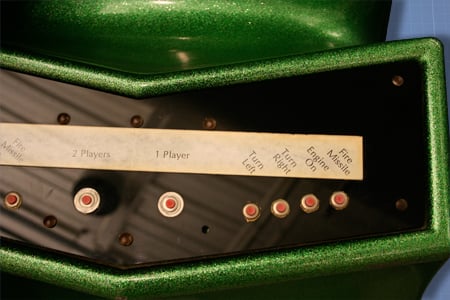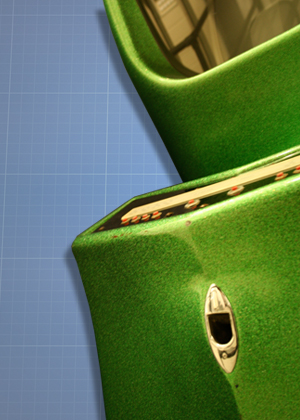This article is more than 1 year old
Before Pong, there was Computer Space
Surrender your quarters, human!
Spacewar!
At the University of Utah's electrical engineering program in the 1960s, Bushnell had the opportunity to play Spacewar!, one of the earliest-known computer games, on DEC mainframe computers. Pioneering one of the video game industry's most treasured tactics, Bushnell decided to develop a knock-off of the game to earn some cash. The same idea was also implemented two months earlier than Computer Space's debut at Standford University with Galaxy Game, although it was limited to only one unit at the Tresidder Union.
Teaming with Dabney, the duo formed the company Syzygy to make Computer Space. While working on the prototype, the two fixed broken pinball machines to fund the project. Syzygy eventually struck up a deal with Nutting Associates, a Mountain View, California-based maker of coin-operated trivia and shooting games to fund the venture and construct the fiberglass cabinet that housed the system.

Although Computer Space wasn't a commercial success (Nutting produced about 1,500 units), the game was ground-breaking in many ways. The cabinet and control scheme became a template for future arcade machines (although the curvy design was quickly scrapped in favor of the rectangular cabinets common today). The machinery in Computer Space was also widely adopted in arcade machines until microprocessors became affordable and more readily available.

Computer Space doesn't have a CPU chip or even system memory, but rather is a solid state computer running on Transistor to Transistor Logic 74xx series chips. The monitor was a standard black and white General Electric vacuum tube television set housed inside the fiberglass shell.
A player controls a rocket ship pitted against flying saucers with a masochistic-level of accuracy with their missiles. The skillful rocket ship commander that manages to score more hits than the saucers by the end of the game's one to two-and-a-half minute playtime goes into a extended play "hyperspace" mode, where the screen color reverses to white.
